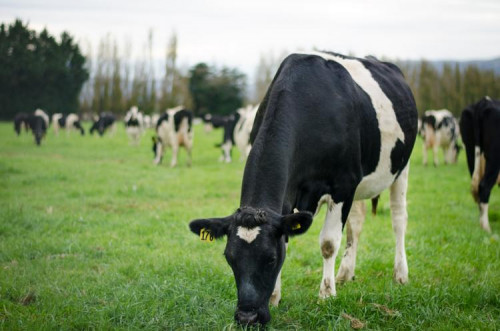
Dr Janet Stephenson
At the flick of a switch
Electricity costs are a significant burden for many farms, especially those that run extensive irrigation and dairying operations.
Could a re-jig of when the switches are flicked bring farmers big savings?
A SfTI team led by University of Otago Research Associate Professor Dr Janet Stephenson is building understanding of how farms could save on power costs.
Janet’s team is working with two clusters of dairy farms that are operated by Iwi organisations in the north and south islands.
Janet says each of these farm clusters include up to a dozen high-tech, irrigated dairy farms that manage around 900-1200 cows each. Power chews up around 5 percent of operating costs on each farm.
“These Iwi have invested in modern, tech-savvy operations, and they also have long-term, intergenerational, sustainable aspirations for the farms. They are particularly motivated to look at some new possibilities for long term improvements,” Janet says.

National power grid operator Transpower offers a demand response scheme that pays industries and individual businesses to reduce their power demands at times when there is high demand on the wider system. Common high demand times are 6-9am, and 6-9pm when New Zealanders are waking up and showering and switching on their kettles and toasters or coming home and turning on their heaters and stoves. There are also other events that Transpower knows will cause high drain on the system, and it advises participants in the demand response scheme of these via phone app, usually with days or hours’ lead-in time. Participants can then choose to switch off some of their load during those times or use standby generators, batteries or other power sources. In return, they receive a payment from Transpower.
PhD student Jefferson Dew is taking two approaches – examining what farms could gain by joining demand response schemes such as Transpower’s, or actively managing their demand according to electricity markets and distribution pricing and also learning more about what social and other barriers prevent farmers from making changes to the operation of their farms.
“Dairy farmers might not be able to change milking time, but increasingly farms use a lot of power for things like cooling, sterilising and irrigation. It could be manageable to do those things at different times, avoid the peak power consumption periods and make back some cash without disrupting farm processes,” Jefferson says.
“We’re also looking at what simple tech solutions could be developed so the timings of activities can be flexibly and automatically changed, without farmers being inconvenienced by having to switch things on and off,” Janet says.

Jefferson is also interviewing the farmers to learn more about the barriers that might prevent them from making changes to their patterns of power usage in dairy sheds and with irrigation.
“In general, it’d be fair to say that farming is quite a conservative sector that operates according to very long-standing traditions, so it’s just as important to understand what the social barriers to making these sorts of changes are as it is to understand the technical side,” Janet says.
The team has been invited to present their findings at three conferences in the United Kingdom and Europe.
“Globally very little has been done on this idea, but there’s a lot of interest in the potential financial benefits for farms by making some adjustments in the timing of electricity use,” Janet says.
“We’ll be sharing our preliminary results with the Iwi and will publish more widely after that.”
Follow us on Twitter @sftichallenge to stay informed.